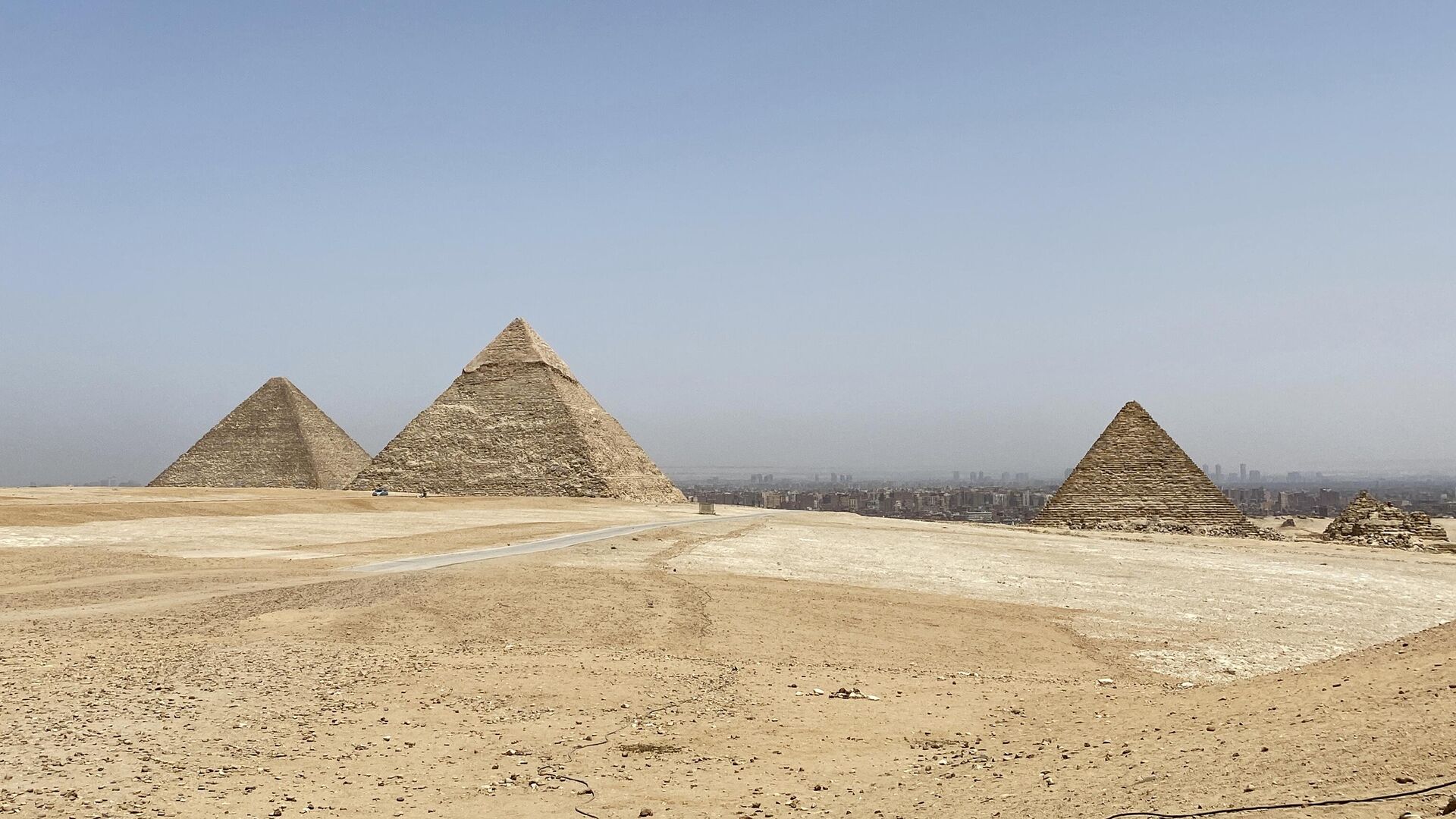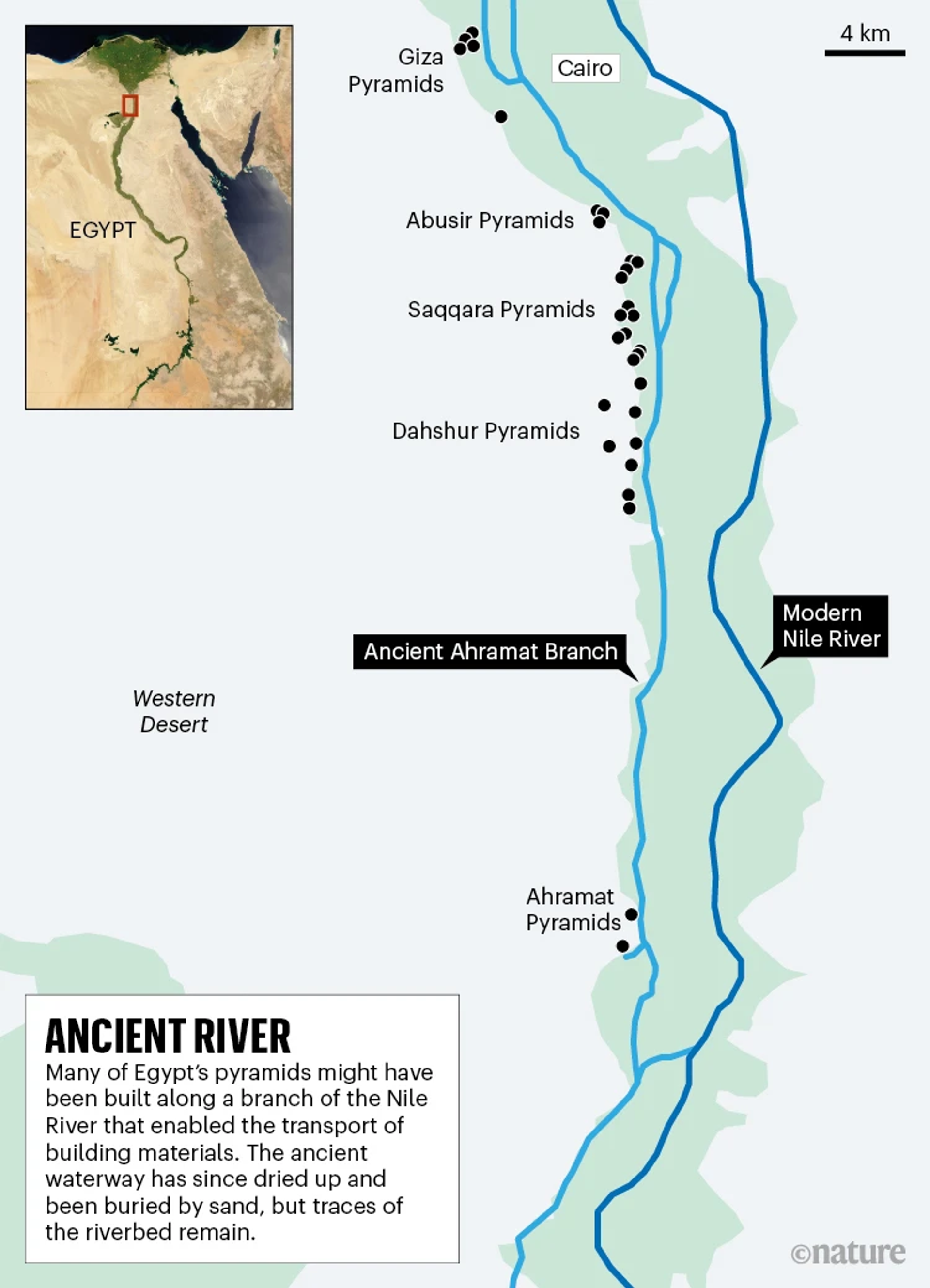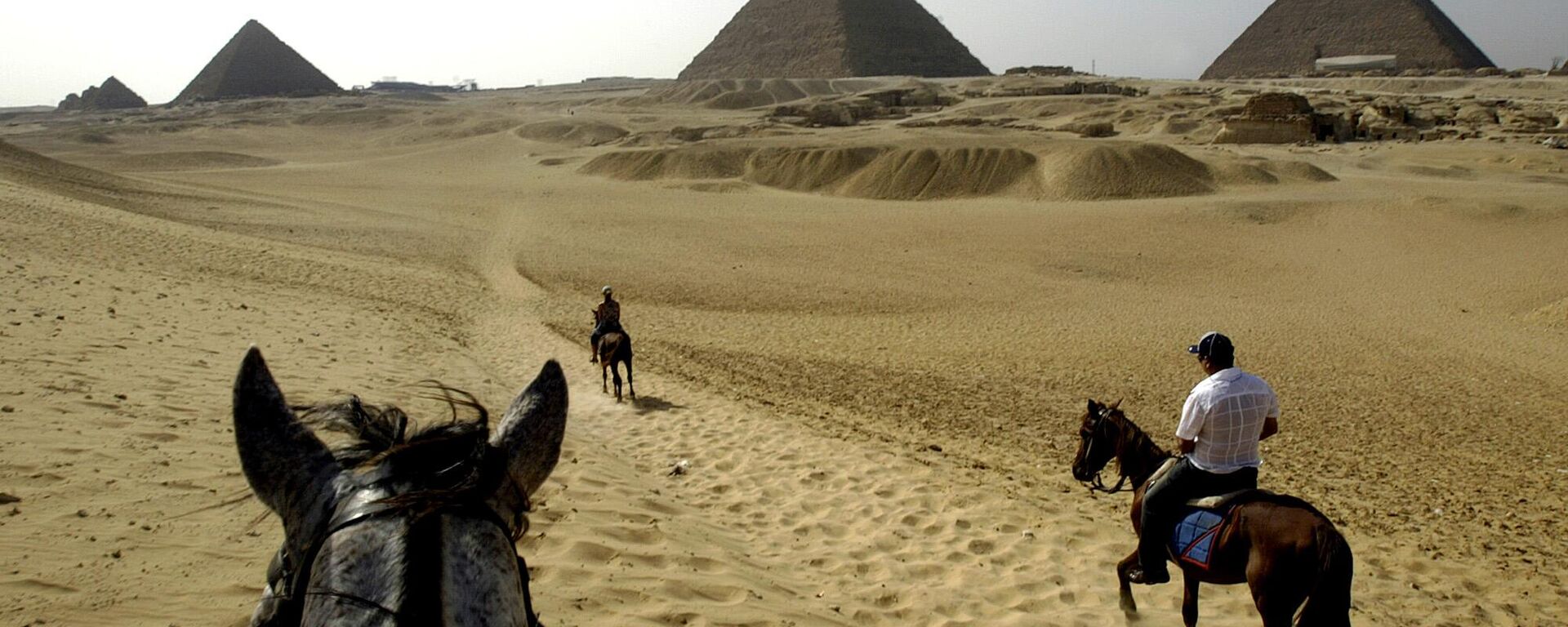https://en.sputniknews.africa/20240517/scientists-uncover-buried-nile-branch-that-may-have-transported-pyramids-stones-1066590637.html
Scientists Uncover Buried Nile Branch That May Have Transported Pyramids’ Stones
Scientists Uncover Buried Nile Branch That May Have Transported Pyramids’ Stones
Sputnik Africa
Earlier scientists have suggested that to transport heavy blocks of granite and limestone over long distances, special construction water channels were used to... 17.05.2024, Sputnik Africa
2024-05-17T14:22+0200
2024-05-17T14:22+0200
2024-05-17T14:22+0200
ancient egypt
egypt
science
north africa
history
culture
construction
water resources
research
archeology
https://cdn1.img.sputniknews.africa/img/07e8/05/11/1066592061_0:160:3072:1888_1920x0_80_0_0_06ca4e1b8efeb34e27a2f62c5156cf12.jpg
An international team of researchers, led by Eman Ghoneim from the US University of North Carolina, Wilmington, has discovered a long-buried branch of the Nile River that may have been used to transport the massive stone blocks for Egypt's pyramids. The findings, detailed in the journal Communications Earth & Environment, revealed a 64-km-long river branch that once flowed alongside more than 30 pyramids, including the Great Pyramid of Giza.Hidden under desert sands and farmlands for millennia, this ancient waterway, named Ahramat ("pyramids" in Arabic) could explain the strategic placement of these monumental structures along a now inhospitable desert strip in the Nile valley, dating back between 4,700 and 3,700 years ago.The Giza pyramid complex and other ancient wonders near the ancient Egyptian capital of Memphis, such as the pyramids of Khafre, Cheops, and Mykerinos, may have relied on this river for transporting construction materials.According to Ghoneim, many pyramids had a "ceremonial raised walkway" running alongside the river, ending at the Valley Temples, which served as harbors. This indicates that the river played a key role in transporting building materials and laborers, the researcher said.The researchers used radar satellite imagery to map the river branch, utilizing the technology’s unique ability to penetrate the sand surface and produce images of hidden features, including buried rivers and ancient structures. Field surveys and sediment core analysis confirmed the river's presence, suggesting it began to be covered in sand around 4,200 years ago during a major drought.Earlier in Egypt, in the necropolis of Saqqara, archaeologists discovered a tomb carved into the rock, the age of which exceeds 4,000 years.
https://en.sputniknews.africa/20240218/egypt-cancels-contentious-pyramid-restoration-project-1065130379.html
ancient egypt
egypt
north africa
Sputnik Africa
feedback@sputniknews.com
+74956456601
MIA „Rossiya Segodnya“
2024
Maxim Grishenkin
https://cdn1.img.sputniknews.africa/img/07e7/0a/17/1063018107_0:0:1104:1103_100x100_80_0_0_03090c85a11f5d2e8a19cf1d989443c9.jpg
Maxim Grishenkin
https://cdn1.img.sputniknews.africa/img/07e7/0a/17/1063018107_0:0:1104:1103_100x100_80_0_0_03090c85a11f5d2e8a19cf1d989443c9.jpg
News
en_EN
Sputnik Africa
feedback@sputniknews.com
+74956456601
MIA „Rossiya Segodnya“
Sputnik Africa
feedback@sputniknews.com
+74956456601
MIA „Rossiya Segodnya“
Maxim Grishenkin
https://cdn1.img.sputniknews.africa/img/07e7/0a/17/1063018107_0:0:1104:1103_100x100_80_0_0_03090c85a11f5d2e8a19cf1d989443c9.jpg
ancient egypt, egypt, science, north africa, history, culture, construction, water resources, research, archeology
ancient egypt, egypt, science, north africa, history, culture, construction, water resources, research, archeology
Scientists Uncover Buried Nile Branch That May Have Transported Pyramids’ Stones
Earlier scientists have suggested that to transport heavy blocks of granite and limestone over long distances, special construction water channels were used to reach a specially arranged port near the pyramids.
An international team of researchers, led by Eman Ghoneim from the US University of North Carolina, Wilmington, has discovered a long-buried branch of the Nile River that may have been used to transport the massive stone blocks for Egypt's pyramids.
The findings, detailed in the journal Communications Earth & Environment, revealed a 64-km-long river branch that once flowed alongside more than 30 pyramids, including the Great Pyramid of Giza.
Hidden under desert sands and farmlands for millennia, this ancient waterway, named Ahramat ("pyramids" in Arabic) could explain the strategic placement of these monumental structures along a now inhospitable desert strip in the Nile valley, dating back between 4,700 and 3,700 years ago.
The Giza pyramid complex and other ancient wonders near the ancient Egyptian capital of Memphis, such as
the pyramids of Khafre, Cheops, and Mykerinos, may have relied on this river for transporting construction materials.
"But nobody was certain of the location, the shape, the size or proximity of this mega waterway to the actual pyramids site," said the lead study author, Eman Ghoneim of the University of North Carolina Wilmington.
According to Ghoneim, many pyramids had a "ceremonial raised walkway" running alongside the river, ending at the Valley Temples, which served as harbors. This indicates that the river played a key role in transporting building materials and laborers, the researcher said.
The researchers used radar satellite imagery
to map the river branch, utilizing the technology’s unique ability to penetrate the sand surface and produce images of hidden features, including buried rivers and ancient structures.
Field surveys and sediment core analysis confirmed the river's presence, suggesting it began to be covered in sand around 4,200 years ago during a major drought.
Earlier in Egypt, in the necropolis of Saqqara, archaeologists discovered a tomb carved into the rock, the age of which exceeds 4,000 years.




